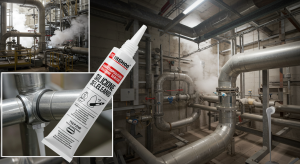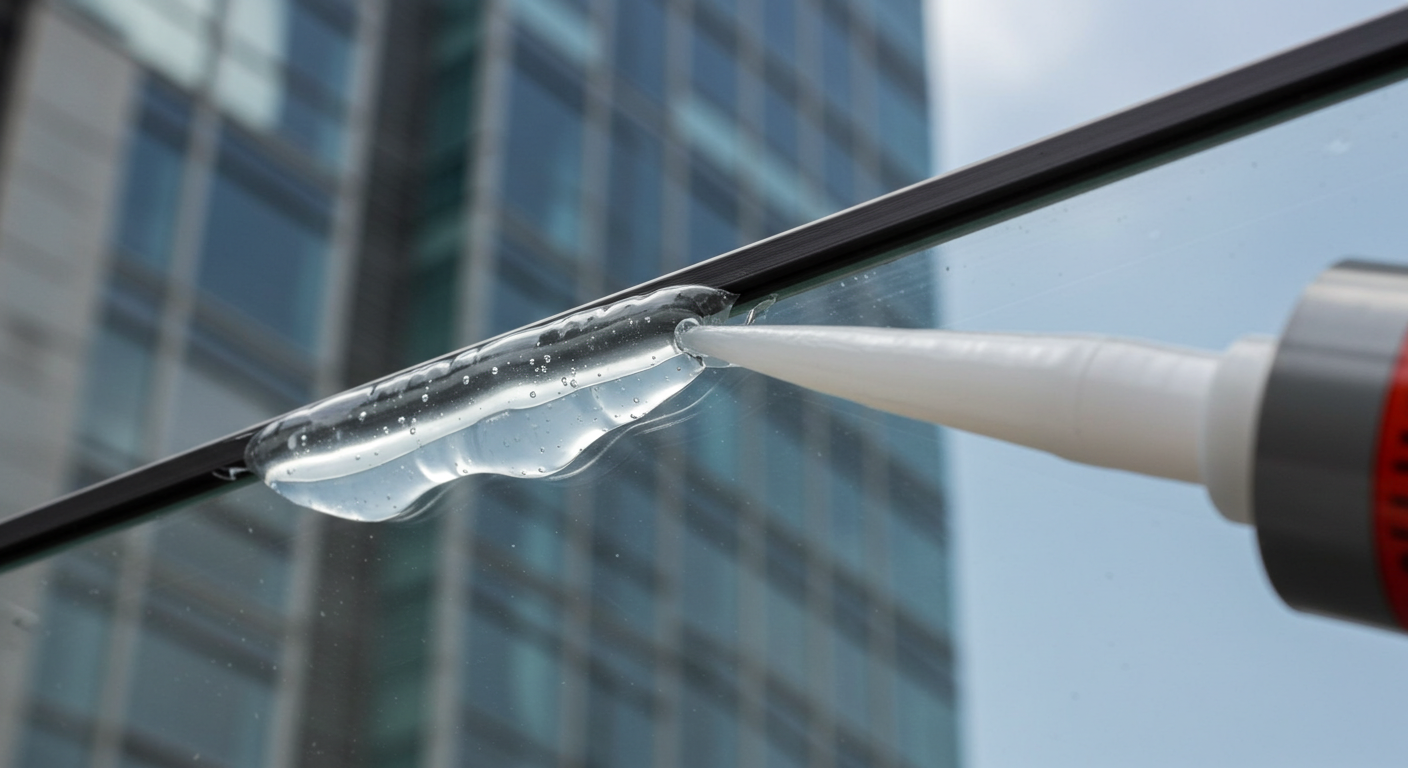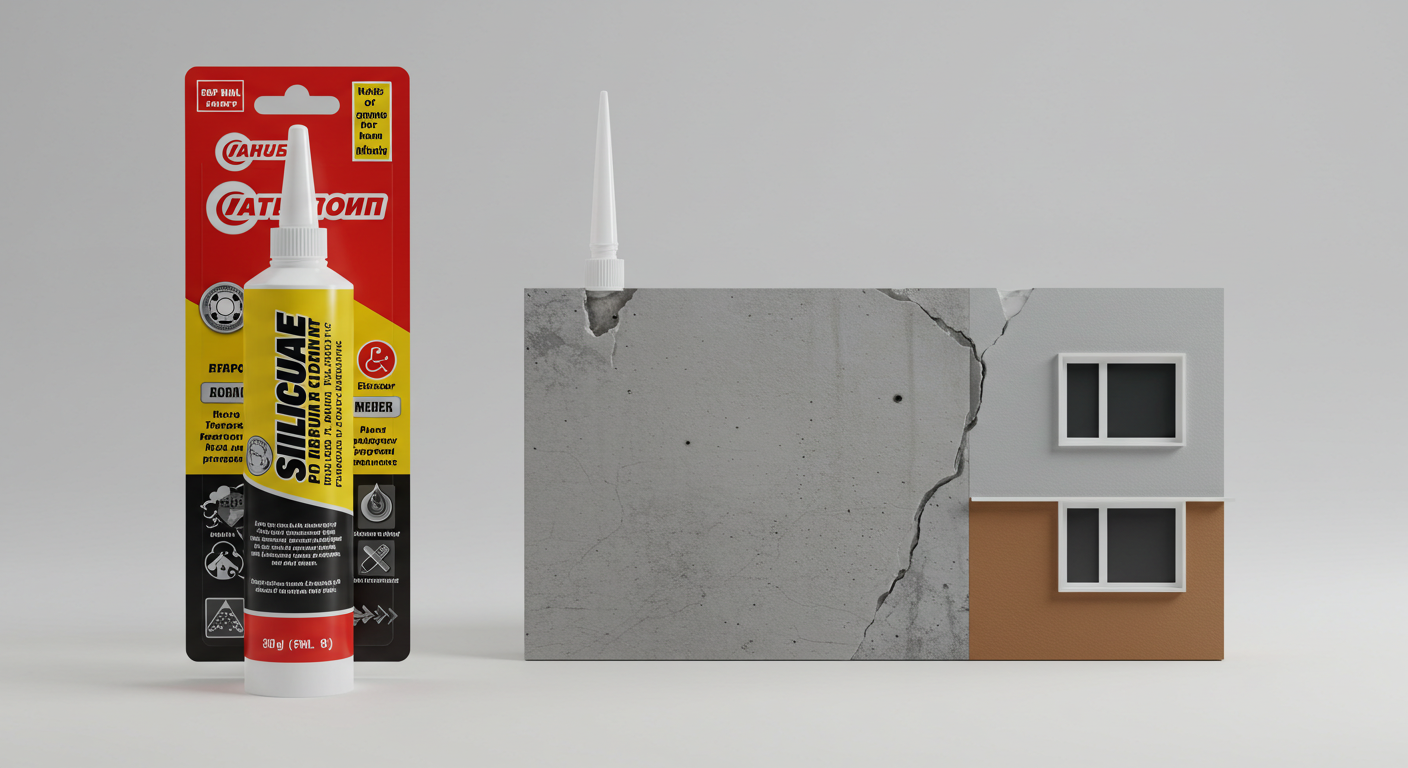High-Temperature Silicone Sealant for Extreme Conditions
2025-02-01

When you’re working in an environment where intense heat is the norm, you need materials that can handle it without breaking down. That’s where high-temperature silicone sealant comes in. Whether you’re sealing components in industrial machinery, automotive engines, or even kitchen appliances, this sealant is designed to hold up under extreme temperatures, providing a durable and long-lasting barrier.
In this post, we’ll take a close look at what high-temperature silicone sealants are, how they compare to other options, their key applications, and what to consider when choosing the right one for your needs. We will also discuss best practices for their application, common mistakes to avoid, and how to extend their lifespan for maximum performance.
What is High-Temperature Silicone Sealant?
High-temperature silicone sealant is a type of adhesive and sealant made from silicone polymers. Unlike regular silicone sealants, it is specifically designed to withstand prolonged exposure to extreme heat. These sealants are often rated to handle temperatures ranging from 500°F (260°C) up to 700°F (370°C) or higher, making them ideal for environments that experience constant heat.
Unlike traditional adhesives, high-temp silicone sealants remain flexible even after exposure to intense heat. This flexibility helps absorb vibrations and prevents cracking, making them essential in applications involving machinery or equipment under constant mechanical stress.
High-temp silicone sealants also possess non-corrosive properties, making them ideal for metal and sensitive electronic applications. Their ability to form watertight, airtight seals further enhances their versatility in extreme conditions.
Key Benefits of High-Temperature Silicone Sealant
Heat Resistance
Their primary advantage is their ability to endure high temperatures without breaking down. This property is essential in areas where standard adhesives would fail, such as industrial ovens, furnaces, or engine gaskets. Withstanding extreme heat ensures the seal remains effective under sustained thermal exposure.
Flexibility and Vibration Absorption
Even in extreme conditions, high-temp silicone sealants retain their elasticity. This flexibility helps them absorb vibrations, which prevents cracking and ensures that the seal remains intact over time. Equipment under constant movement, such as engines or industrial machines, benefits significantly from this feature.
Water and Chemical Resistance
In addition to heat, these sealants provide excellent resistance to moisture, oils, and chemicals. Their non-porous nature ensures protection against corrosive substances, making them suitable for applications in harsh environments like chemical plants and offshore installations.
Longevity and Durability
Once cured, high-temperature silicone sealants provide a long-lasting bond that resists aging, cracking, and shrinking, even after extended exposure to heat. Their durability means fewer maintenance cycles, reducing overall downtime and costs.
Applications of High-Temperature Silicone Sealant
Automotive and Mechanical Uses
In automotive applications, high-temperature silicone sealants are commonly used for sealing engine components, such as gaskets, valve covers, exhaust systems, and manifolds. Their ability to withstand oil, fuel, and high heat makes them a trusted choice for mechanics and manufacturers.
Additionally, they play a vital role in repairing and maintaining industrial vehicles, where extreme operating conditions demand materials that don’t compromise performance.
Industrial Machinery
Factories and plants often require machinery that operates under extreme conditions. High-temperature silicone sealants are used to seal joints and components in furnaces, boilers, and other heat-intensive equipment. Sealing pipes, valves, and pumps with these sealants prevents leaks and ensures operational efficiency.
High-temp silicone sealants also provide thermal insulation in industrial kilns and heavy manufacturing machinery, contributing to energy conservation.
Kitchen Appliances
Ovens, stoves, microwaves, and other heat-producing kitchen equipment benefit from the protective properties of high-temperature silicone sealants. They are used to seal oven doors, exhaust vents, and other areas exposed to high heat and steam, preventing heat loss and protecting internal components from damage.
In commercial kitchens, they ensure food preparation areas are sealed effectively to comply with health and safety standards.
Electrical and Electronic Applications
Electrical components, such as circuit boards, power supplies, and transformers, can generate significant heat. High-temperature silicone sealants provide insulation and protect sensitive parts from overheating or damage. They are often used in devices where high-voltage and high-heat conditions coexist, such as industrial lighting systems and heavy-duty motors.
Comparing High-Temperature Silicone Sealant to Other Sealants
| Sealant Type | Temperature Resistance | Flexibility | Chemical Resistance | Typical Applications |
|---|---|---|---|---|
| High-Temperature Silicone | Up to 700°F or higher | High | Excellent | Engines, furnaces, ovens, industrial use |
| Polyurethane Sealant | Up to 250°F | Moderate | Good | Construction, window sealing |
| Acrylic Latex Sealant | Up to 180°F | Low | Fair | General-purpose indoor applications |
| Epoxy Sealant | Varies, generally lower | Rigid | High | Structural bonding, heavy-duty tasks |
As seen in the table, high-temperature silicone sealants outperform many other types in terms of heat resistance and flexibility. While epoxies provide strong structural bonds, they lack the elasticity needed to absorb vibrations. Polyurethane sealants, although versatile, fall short when exposed to extreme heat for prolonged periods.
Key Considerations When Choosing a High-Temperature Silicone Sealant
Temperature Range
Different products are rated for different maximum temperatures. Always check the manufacturer’s specifications to ensure the sealant you choose can handle the temperatures your application requires.
For industrial settings, sealants with ratings exceeding 700°F are recommended, while household or automotive applications may only require lower temperature resistance.
Surface Compatibility
High-temp silicone sealants adhere to a variety of materials, including metal, glass, ceramics, and plastics. However, some formulations are better suited for specific surfaces, so verify compatibility before application. Specialized versions may also be required for porous materials.
Curing Time
Curing time varies between products. Some sealants cure in just a few hours, while others may take up to 24 hours. Fast-curing options are ideal for projects that require quick turnaround times. For long-term projects, allowing sufficient curing time ensures maximum bond strength.
Chemical Exposure
If the application involves exposure to chemicals, oils, or solvents, select a high-temperature silicone sealant specifically designed to resist those substances. Chemical resistance ensures the sealant does not degrade prematurely.
How to Apply High-Temperature Silicone Sealant
Applying high-temperature silicone sealant correctly ensures a strong and long-lasting bond. Here’s a step-by-step guide:
Step 1: Prepare the Surface
Clean the surface thoroughly to remove dirt, grease, or old sealant. Use a degreaser or alcohol-based cleaner to ensure proper adhesion. A clean surface reduces the risk of premature failure.
Step 2: Cut the Nozzle
Cut the nozzle of the sealant tube at a 45-degree angle to create an opening that matches the size of the joint or seam. Proper nozzle size ensures even application.
Step 3: Apply the Sealant
Using a caulking gun, apply a steady, even bead of sealant along the joint. Make sure to apply enough pressure to fill any gaps or voids. Avoid overapplication, as excess sealant can be difficult to remove.
Step 4: Smooth the Bead
Use a gloved finger or a sealant-smoothing tool to smooth out the bead and ensure it adheres fully to the surface. This step eliminates air pockets and promotes a stronger bond.
Step 5: Allow Curing Time
Follow the manufacturer’s instructions for curing time. Avoid putting stress on the joint until the sealant is fully cured to prevent weak spots.
Common Mistakes to Avoid
Skipping Surface Preparation
One of the most common mistakes is failing to clean the surface properly. Dirt and grease can prevent the sealant from bonding, leading to premature failure.
Applying Too Much Sealant
Overapplying sealant can lead to uneven curing and a messy finish. Apply a consistent bead without overdoing it.
Ignoring Curing Instructions
Using the sealant before it fully cures can weaken the bond and reduce its effectiveness. Always adhere to the recommended curing times.
Environmental Considerations
High-temperature silicone sealants are generally eco-friendly, as they do not emit harmful fumes once cured. However, it’s important to use them in well-ventilated areas during application, as uncured sealants can emit odors or volatile compounds.
Many manufacturers have developed formulations with low volatile organic compounds (VOCs) to minimize environmental impact while maintaining performance.
Final Thoughts on High-Temperature Silicone Sealant
High-temperature silicone sealants are indispensable in environments where heat and stress can cause traditional adhesives to fail. Whether you’re working on an automotive engine, a commercial oven, or industrial machinery, these sealants provide the strength, flexibility, and resistance needed to keep everything running smoothly. By understanding their benefits, applications, and proper usage, you can ensure long-lasting protection and performance for your high-temperature projects.
With proper selection and application, high-temp silicone sealants offer peace of mind, knowing that your seals will withstand the heat, vibrations, and environmental stresses they encounter.




